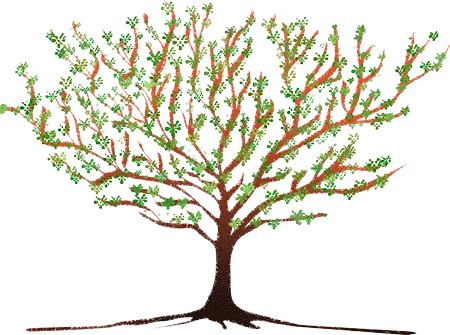Resilience
"Only in growth, reform, and change, paradoxically enough, is true security to be found."
Anne Morrow Lindbergh
We all take hits in life. We all get sick on occasion and most of us get injured at some point. Most of us suffer setbacks in our careers, our love lives and our finances. Naturally, some suffer more than others, but one thing is certain: getting knocked down is a human universal. So it comes as no surprise to find that resilience is a hot topic these days. The fields of positive psychology and business management are abuzz with talk about who’s resilient and how we might promote it in our families, our communities and our organizations.
Officially, resilience is defined as a process whereby “individuals exhibit positive behavioral adaptation when they encounter significant adversity, trauma, tragedy, threats, or even significant sources of stress.” Experts have a good deal to say about the psychological details of this process, but most of us are quick to resort to metaphor. Most of us use words like “rebound,” “elasticity,” “recovery,” and “bouncing back from adversity.” When battered by the trials of athletic injury and broken relationships, many of us talk about “making a comeback.”
These metaphors are sometimes valuable and can even be inspirational, but they also contain a trap and a misconception. When we talk about rebounding, we’re imagining a return to some ideal state of the past: homeostasis, equilibrium, or a golden age in one form or another. We want to make a comeback to a time of health, happiness, athletic excellence or financial prosperity. If we’re just resilient enough, we can rebound back to where we want to be.
This notion of resilience is not just limited to our individual lives. We also hear the same theme in conversations about environmental issues and the state of the natural world. Many activists long to return the biosphere to some ancient state of biological health and sustainability. We romance a golden age of the past, when plants, animals, soil and water lived in a state of harmony. If we could just return to that state of equilibrium, all would be well.
But of course, we’re mistaken in both cases. There is no going back and in this sense, there can be no rebound, elasticity or resilience. The body does not go backwards, nor does the mind or the spirit. The thing that we call “health” is not a steady state that we can return to, it is a process of forward motion. The same holds true for the biosphere at large. Habitat is always changing, adapting and evolving. There is no ideal state of ecological perfection; all is in motion.
We misunderstand our bodies and in turn, our lives. When we experience an injury or illness, it appears that we “heal.” After a few days or weeks of rehab, the body returns to what looks and feels like its original state. We’re “as good as new” we might say. But actually, we aren’t. If we were to really get down and take a close look at the microscopic details of our physiology and our biochemistry, we’d see changes. Every encounter with the world transforms the body in some small way. Every experience changes the flow of information, the arrangement of cells, the composition of membranes and the behavior of neural networks. And it always goes forward.
If injured, the body repairs the damage, but leaves scar tissue behind on tendons, ligaments and muscle. If we get an infection, the immune system “learns” about the pathogen and produces appropriate antibodies that linger for months or years. If we are traumatized by stress, cascades of neurotransmitters change the sensitivity of membranes and facilitate new patterns of activity. In no case does the tissue return to its original state. Every event in our lives is written into the microscopic state of the body. In a sense, this thing we call “healing” is an illusion. The body does not go back to an older state of structure or function, rather, it goes forward to a new state of integration.
And so, our talk of resilience is misplaced. So is our talk of “rebounding” and “making a comeback.” This is a fact that’s sometimes recognized in alcoholic counseling programs, where people are advised that “There is no recovery.” In other words, it’s pointless and even counter-productive to pretend that one could somehow leapfrog back to a golden age of health and sobriety. No, the experience has changed the alcoholic’s body and life, not to mention the lives of people around him. His brain has changed, his metabolism has changed and his cognition has changed. This is the raw material he has to work with right now. There is no going back. Thus the sound advice to “heal forward” and “do the next right thing.”
The same principle holds true for any encounter we might have with challenge, adversity and stress. These experiences not only change our bodies, they also change our minds, our spirits and our personalities. In fact, they change everything from the microscopic qualities of synaptic membranes all the way up to the level of social organization and community. Every encounter and experience creates change. This is what we have to work with.
So there can be no going back to some romanticized state of health or a pre-stress utopia. We are here today with the bodies and lives that we have. We may have been hammered by the world, beaten up by the workplace and abused by the people around us, but this is the body and the life that we have to work with. The challenge is to integrate the injury, metabolize the illness, absorb the stress, grow forward and branch out. Instead of longing for a golden age of the past, use these adversities as nutrients for new ideas, new behaviors and new relationships.
The past is gone.
Stop wishing and start creating.
universal-tree
